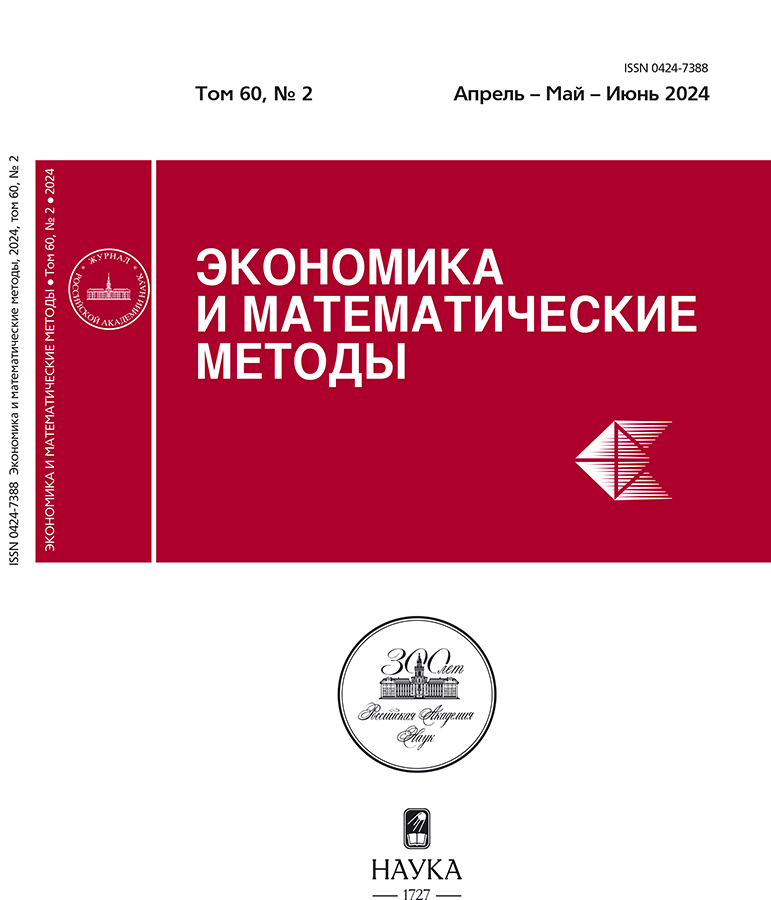On the location of geometrical medians of triangles
- Авторлар: Panov P.A.1
-
Мекемелер:
- HSE University
- Шығарылым: Том 60, № 2 (2024)
- Беттер: 139-144
- Бөлім: Mathematical analysis of economic models
- URL: https://hum-ecol.ru/0424-7388/article/view/653307
- DOI: https://doi.org/10.31857/S0424738824020117
- ID: 653307
Дәйексөз келтіру
Аннотация
The geometrical median is a natural spatial generalization of the statistical median of a one-dimensional sample. Thus the problem of computing the median of a finite set of points (a sample) on a straight line presents no difficulties, but unexpected difficulties arise in moving to the plane or to higher dimensional spaces, where the natural linear order of points is absent. While the mean of a multidimensional sample, as on a straight line, is calculated by taking the arithmetic mean, no such analytical formula is available for the geometric median. Moreover, such formulas are absent when we deal with geometrical medians of continuous objects located on a plane or in space. This raises the natural question of analytical estimates of the locations of geometric medians. This paper presents the solutions for two such simplest problems. Namely, the solution of the problem on estimating the location of the geometric median of the perimeter of a triangle and the solution of a similar problem on the geometric median of a triangular area. For both problems, we obtain exact estimates of the affine type.
Толық мәтін
Авторлар туралы
P. Panov
HSE University
Хат алмасуға жауапты Автор.
Email: ppanov@hse.ru
Ресей, Moscow
Әдебиет тізімі
- Балк М. Б., Болтянский В. Г. (1987). Геометрия масс. М.: Наука. [Balk M. B., Boltyansky V. G. (1987). Geometry of masses. M.: Nauka (in Russian).]
- Панов П. А. (2017). Равновесные расположения центров благ по городу // Журнал Новой экономической ассоциации. № 1. С. 28–42. [Panov P. A. (2017). Nash equilibria in the facility location problem with externalities. Journal of the New Economic Association, 1 (33), 28–42 (in Russian).]
- Панов П. А. (2021). О геометрических медианах треугольников. Режим доступа: https://arxiv.org/ftp/arxiv/papers/2007/2007.14231.pdf [Panov P. A. (2021). On geometric medians of triangles. Available at: https://arxiv.org/ftp/arxiv/papers/2007/2007.14231.pdf (in Russian).]
- Bajaj C. (1988). The algebraic degree of geometric optimization problems. Discrete and Computational Geometry, 3 (2), 177–191.
- Behrend K. (2014). Introduction to algebraic stacks. In: Moduli Spaces. L. Brambila-Paz, P. Newstead, R. P. Thomas, O. García-Prada (eds.). London Mathematical Society Lecture Notes, 411. Cambridge: Cambridge Univ. Press., 1–131.
- Fekete S. P., Mitchell J. S.B., Beurer K. (2005). On the continuous Fermat-Weber problem. Operations Research, 53 (1), 61– 76. doi: 10.1287/opre.1040.0137. S2CID1121
- Mallows C. (1991). Another comment on O’Cinneide. The American Statistician, 45, 3, 257. doi: 10.1080/00031305.1991.10475815
- Murray A. T. (2020). Location theory. In: International encyclopedia of human geography. 2nd ed. A. Kobayashi (ed.). Oxford: Elsevier. doi: 10.1016/B978-0-08-102295-5.10104-0
- Piché R. (2012). Random vectors and random sequences. Saarbrücken: Lambert Academic Publishing. ISBN: 978-3659211966
- Stewart I. (2017). Why do all triangles form a triangle? American Mathematical Monthly, 124, 1, 70–73. doi: 10.4169/amer.math.monthly.124.1.70
- Yao J., Zhang X., Murray A. T. (2019). Location optimization of urban fire stations: Access and service coverage. Computers, Environment and Urban Systems, 73, 184–190. doi: 10.1016/j.compenvurbsys.2018.10.006
Қосымша файлдар













